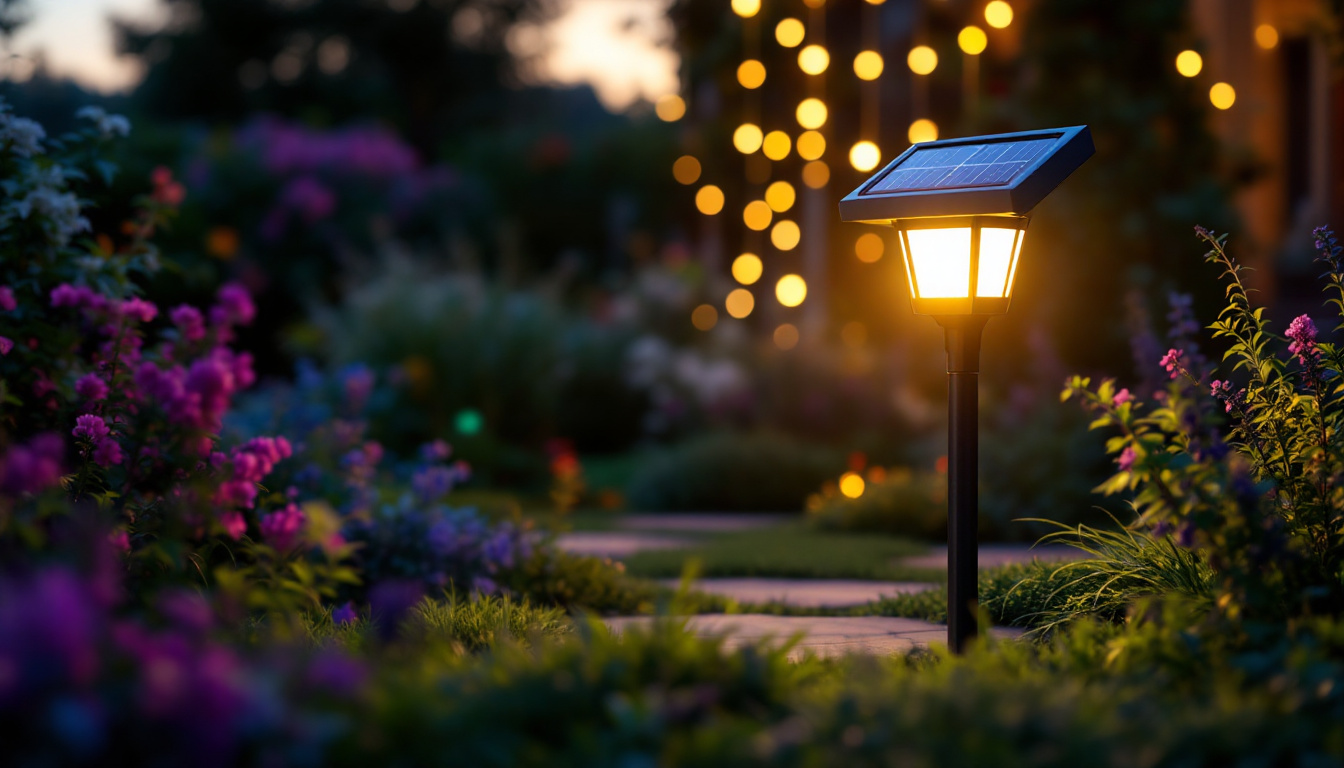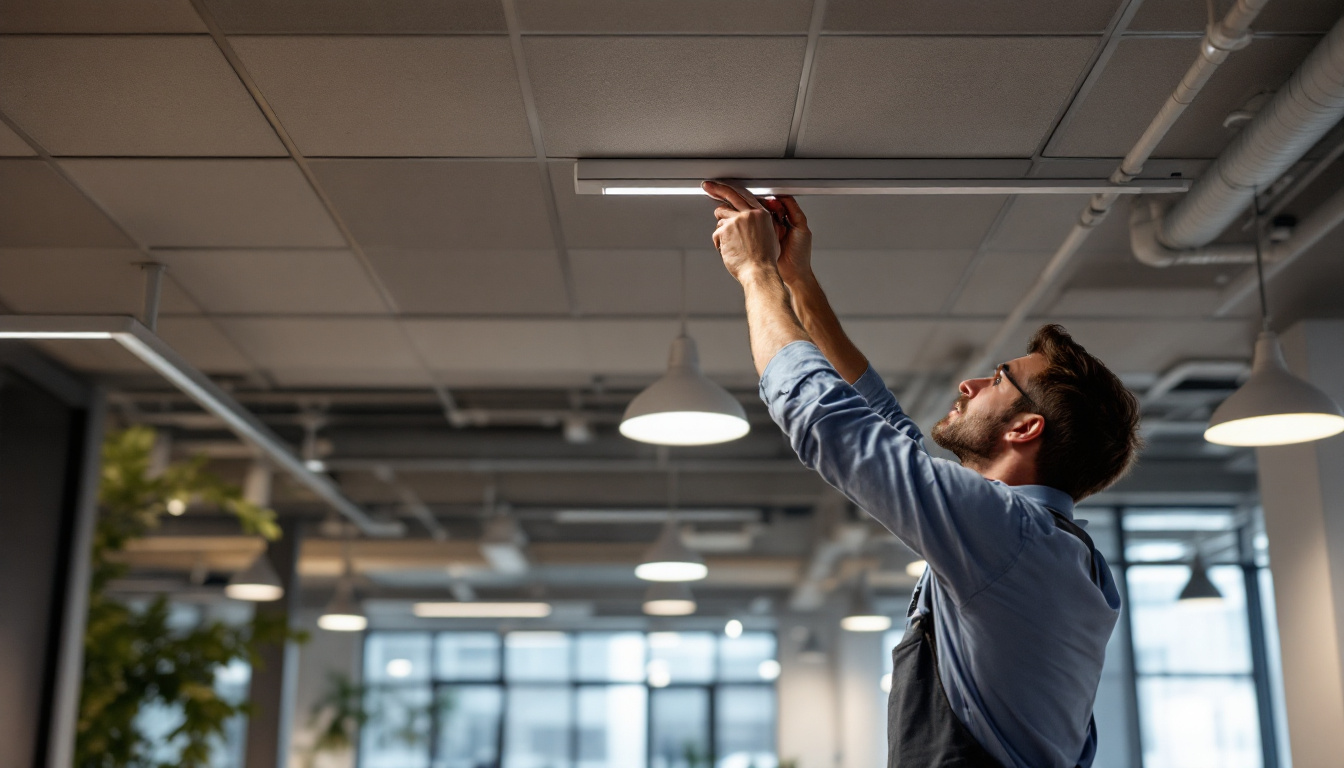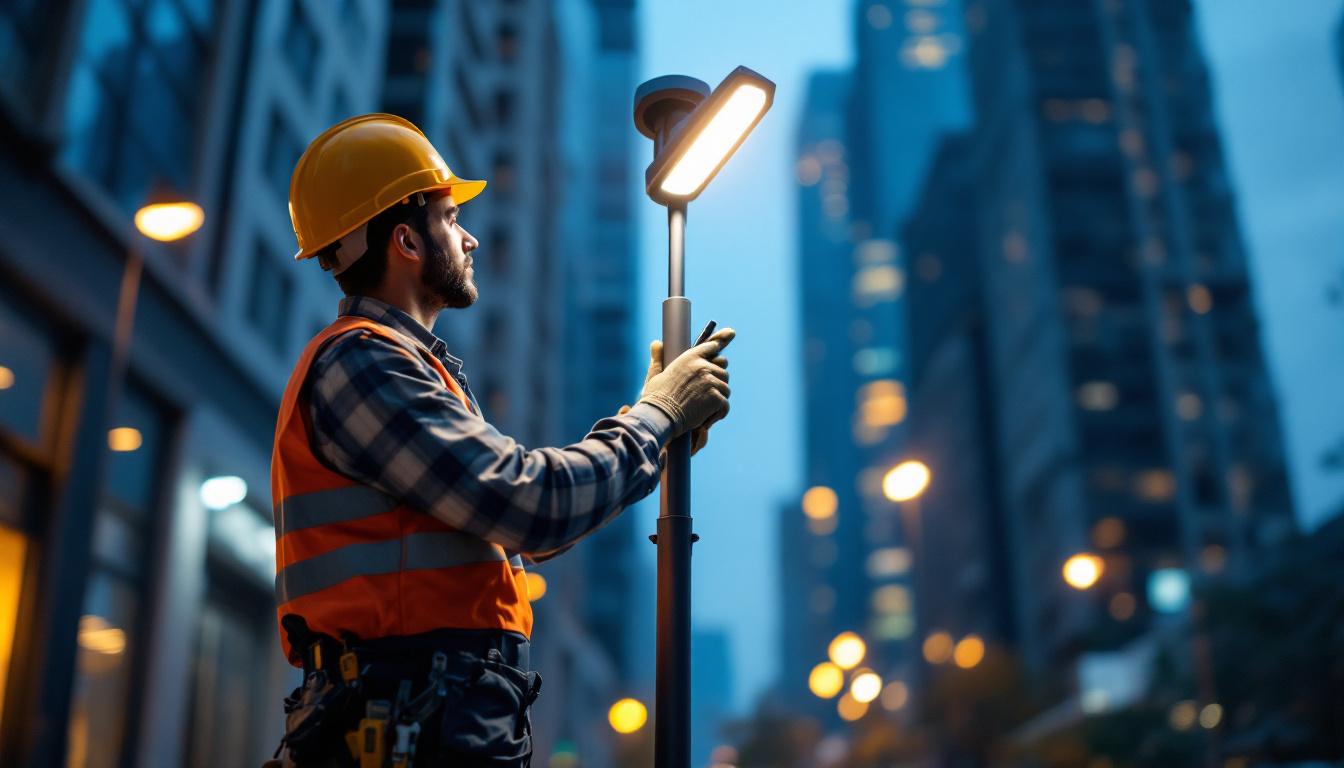
In recent years, the demand for sustainable and energy-efficient lighting solutions has skyrocketed. Among these, solar lamps have emerged as a popular choice for both residential and commercial applications. For lighting contractors, understanding the intricacies of solar lamp installation and maintenance can lead to enhanced service offerings and greater customer satisfaction. This article explores top strategies that lighting contractors can adopt to effectively integrate solar lamps into their projects.
Before diving into installation techniques and strategies, it is crucial for lighting contractors to grasp the underlying technology of solar lamps. These devices harness sunlight through photovoltaic cells, converting it into electricity to power LED lights. This self-sustaining energy model not only reduces electricity costs but also minimizes the carbon footprint of lighting solutions. Moreover, solar lamps can operate independently of the electrical grid, making them an excellent choice for remote areas where traditional wiring may be impractical or too costly.
A solar lamp typically consists of several key components: the solar panel, battery, LED light source, and control circuitry. The solar panel collects sunlight during the day, charging the battery that stores energy for nighttime use. The LED light source provides illumination, while the control circuitry manages the operation, ensuring that the lamp turns on at dusk and off at dawn. Additionally, many modern solar lamps come equipped with sensors that can adjust brightness levels based on ambient light, enhancing energy efficiency and prolonging battery life.
Familiarity with these components allows lighting contractors to diagnose potential issues and provide informed recommendations to clients. Understanding how each part functions can also assist in selecting the right solar lamp for specific applications. For instance, contractors should consider factors such as the wattage of the LED, the capacity of the battery, and the efficiency of the solar panel to ensure optimal performance in varying weather conditions.
There are various types of solar lamps available on the market, each designed for different applications. Pathway lights, floodlights, and decorative lanterns are just a few examples. Pathway lights are ideal for illuminating walkways and gardens, while floodlights are suitable for larger areas that require more intense lighting. Additionally, solar post lights can enhance the aesthetic appeal of outdoor spaces, providing both functionality and style.
Contractors should assess the specific needs of their clients and recommend the appropriate type of solar lamp. This tailored approach not only enhances customer satisfaction but also positions the contractor as a knowledgeable expert in the field. Furthermore, understanding the latest advancements in solar technology, such as smart solar lamps that integrate with home automation systems, can give contractors a competitive edge, allowing them to offer innovative solutions that meet the evolving demands of modern consumers.
Proper installation is crucial for the optimal performance of solar lamps. Lighting contractors should follow best practices to ensure that their installations are both efficient and aesthetically pleasing. Here are some strategies to consider.
Before installation, conducting a thorough site assessment is essential. This involves evaluating the amount of sunlight the area receives throughout the day. Factors such as surrounding trees, buildings, and other obstructions can significantly impact the performance of solar lamps.
By understanding the solar exposure of the installation site, contractors can strategically position solar lamps to maximize sunlight absorption. This proactive approach can lead to longer-lasting and more effective lighting solutions. Additionally, assessing the local climate and seasonal changes can further inform decisions about the types of solar lamps to use, as certain models may perform better in specific weather conditions. For example, regions with frequent overcast days might benefit from solar lamps equipped with larger batteries or those that utilize more efficient solar panel technology.
Placement and spacing of solar lamps are critical to achieving uniform illumination. Contractors should consider the height and angle of the solar panels to ensure they capture the most sunlight. Additionally, spacing between lamps should be calculated based on the desired brightness and coverage area.
For instance, when installing pathway lights, a common recommendation is to space them approximately 6 to 8 feet apart. This spacing not only provides adequate lighting but also enhances the visual appeal of the landscape. Moreover, it is important to consider the specific use of the area; for example, in high-traffic zones or areas requiring increased safety, closer spacing may be necessary to ensure that the illumination is sufficient to prevent accidents. Furthermore, incorporating a mix of solar lamp styles and heights can create a dynamic lighting design that enhances the overall aesthetic while providing functional lighting solutions.
While solar lamps are designed to be low-maintenance, periodic checks and troubleshooting can prolong their lifespan and efficiency. Lighting contractors should educate clients on basic maintenance practices and be prepared to address common issues.
Dust, dirt, and debris can accumulate on solar panels, obstructing sunlight and reducing charging efficiency. Contractors should advise clients to clean the panels regularly, especially after storms or during seasons with heavy pollen. A simple wipe with a damp cloth can significantly improve performance.
In addition to cleaning the solar panels, it’s essential to check the LED lights for any signs of wear or damage. Replacing burnt-out bulbs promptly ensures that the lighting system remains effective.
Contractors should be equipped to troubleshoot common issues that may arise with solar lamps. If a lamp is not functioning, the first step is to check the battery. A depleted or damaged battery can prevent the lamp from operating. In some cases, replacing the battery may resolve the issue.
Additionally, if the lamp is not illuminating as brightly as expected, it may be due to insufficient sunlight exposure. This can be addressed by relocating the lamp or trimming nearby foliage that may be casting shadows.
Educating clients about solar lamp technology and maintenance is vital for ensuring long-term satisfaction. Lighting contractors can enhance their service by providing informative resources and guidance.
Creating brochures or guides that outline the benefits of solar lamps, installation procedures, and maintenance tips can be an effective way to educate clients. These materials can serve as a reference for homeowners and businesses, helping them understand the advantages of solar lighting.
Additionally, including case studies or testimonials from previous clients can build trust and demonstrate the effectiveness of solar lamps in various applications.
Hosting workshops or demonstrations can further engage clients and showcase the capabilities of solar lamps. These events provide an opportunity for potential customers to see the products in action and ask questions about installation and maintenance.
By actively involving clients in the learning process, contractors can foster a sense of community and encourage more informed decision-making regarding solar lighting solutions.
As the demand for sustainable lighting options grows, effective marketing strategies are essential for lighting contractors looking to expand their solar lamp offerings. Here are some key approaches to consider.
Establishing a strong online presence is crucial in today’s digital age. Contractors should create a website that showcases their solar lamp offerings, including detailed descriptions, installation services, and customer testimonials. Incorporating high-quality images and videos can also enhance the visual appeal of the site.
Social media platforms provide an excellent avenue for reaching potential clients. Sharing informative content, project highlights, and customer success stories can help build brand awareness and attract new customers interested in solar lighting solutions.
Building relationships with local businesses can be a valuable marketing strategy. Collaborating with landscape designers, architects, and builders can lead to referrals and joint projects that incorporate solar lamps. Networking within the community can also help contractors stay informed about emerging trends and customer preferences.
Participating in local trade shows or home improvement expos can further enhance visibility and provide opportunities to connect with potential clients.
The solar lighting industry is continuously evolving, with advancements in technology and design. Lighting contractors should stay abreast of these trends to remain competitive and offer the best solutions to their clients.
One of the most exciting trends in solar lighting is the integration of smart technology. Smart solar lamps can be controlled remotely via mobile apps, allowing users to adjust brightness levels, set timers, and monitor energy usage. This level of control enhances user experience and can lead to increased energy savings.
Contractors who embrace smart solar technology can position themselves as leaders in the industry, attracting tech-savvy clients who are interested in innovative solutions.
As aesthetics play a significant role in lighting design, manufacturers are continuously innovating to create visually appealing solar lamps. Unique designs that blend seamlessly with outdoor environments are becoming increasingly popular. Lighting contractors should keep an eye on emerging design trends to offer clients a diverse range of options that suit their preferences.
By staying informed about design innovations, contractors can provide tailored solutions that enhance the overall appeal of outdoor spaces.
Solar lamps represent a significant opportunity for lighting contractors to expand their service offerings and meet the growing demand for sustainable lighting solutions. By understanding the technology, implementing best practices for installation and maintenance, and effectively marketing these products, contractors can position themselves as experts in the field.
As the industry continues to evolve, embracing new technologies and design trends will be crucial for staying competitive. By adopting these strategies, lighting contractors can not only enhance their business but also contribute to a more sustainable future.
Ready to elevate your lighting projects with the latest solar lamp technology? At LumenWholesale, we provide lighting contractors with the highest quality, spec-grade lighting products at unbeatable wholesale prices. Say goodbye to local distributor markups and hello to superior lighting that meets the highest industry standards. With our extensive selection, free shipping on bulk orders, and commitment to affordability and convenience, you’re set to deliver reliable, high-performance lighting for every project. Don’t miss out on the best value in wholesale lighting. Explore our collection now and bring sustainable brilliance to your clients.

Explore the pros and cons of Parkland Lighting compared to other options in this insightful guide for lighting contractors.

Discover how LED office ceiling lights are revolutionizing the work of lighting contractors.

Discover the pivotal role sensor lights play in modern lighting projects and why they are essential for contractors.

Discover how investing in 2 light poles can enhance efficiency and profitability for lighting contractors.